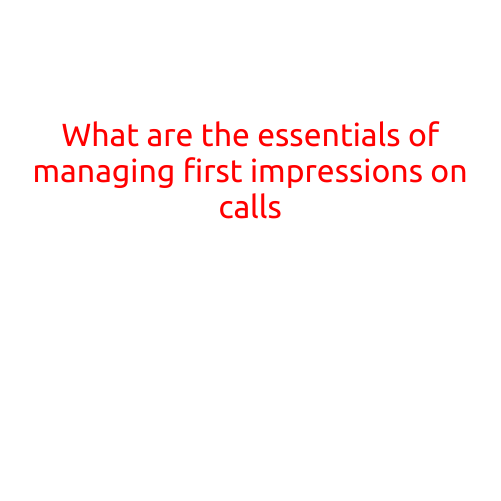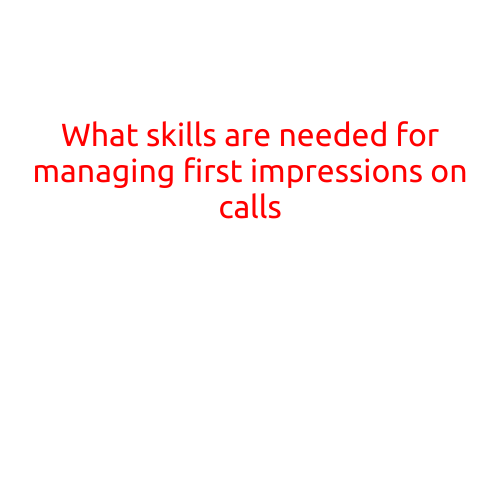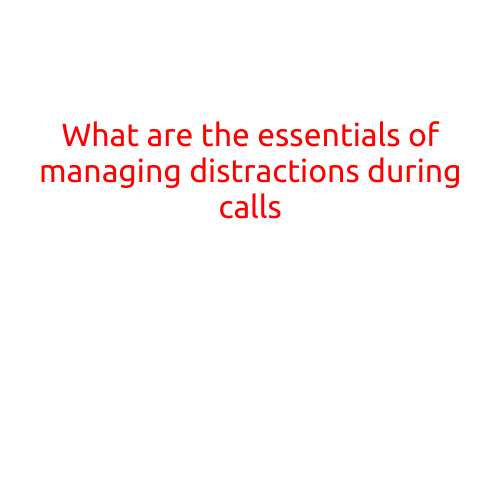
What are the Essentials of Managing First Impressions on Calls?
In today’s fast-paced business world, initial impressions can make or break a relationship with a potential customer, client, or partner. This is particularly true when it comes to sales calls, negotiations, or crucial conversations that can impact your business’s success. A well-managed first impression on a call can set the tone for a positive and productive conversation, while a poor one can lead to missed opportunities and lost business. In this article, we’ll explore the essentials of managing first impressions on calls and provide tips to help you make a lasting and positive impact.
1. Be Prepared
Before making a call, make sure you’re prepared and familiar with the following:
- The prospect or contact’s background and interests
- The purpose of the call and what you want to achieve
- Any relevant data or research to support your claims
- A clear and concise pitch or value proposition
This preparation will help you feel more confident and focused during the call, which is essential for making a positive first impression.
2. Smile and Make Eye Contact (Even on Video Calls)
While the person on the other end of the call can’t see you, smiling and making eye contact can still have a positive impact on your tone and demeanor. When speaking, maintain good posture, and use a warm and friendly tone to convey enthusiasm and sincerity.
3. Use a Professional Greeting
Start the call with a professional greeting, including your name, company, and a brief introduction. This sets the tone for the conversation and shows that you’re respectful and organized.
4. Be Prompt and Respectful
Be punctual and respectful of the person’s time. If you’re running late or experiencing technical issues, apologize and explain the situation. A little courtesy can go a long way in building trust and rapport.
5. Use a Clear and Concise Opening
Begin the call with a clear and concise opening that grabs the listener’s attention. This can be a thought-provoking question, a relevant statistic, or a brief story that sets the stage for the conversation.
6. Focus on the Prospect’s Needs
Show that you’ve done your research and are genuinely interested in the prospect’s needs and concerns. Ask open-ended questions, listen actively, and provide solutions that address their specific pain points.
7. Speak Clearly and Confidently
Enunciate clearly, speak at a moderate pace, and use a confident tone. Avoid filler words (e.g., “um,” “ah”), and try to maintain a consistent pitch to convey enthusiasm and conviction.
8. Show Enthusiasm and Passion
Inject your personality into the conversation by showing enthusiasm and passion for your product or service. This can be contagious and help build a connection with the prospect.
9. Summarize and Recap
At the end of the call, summarize the key points you’ve discussed and recap any action items or next steps. This ensures that both parties are on the same page and avoids misunderstandings.
10. Follow Up and Follow Through
After the call, send a follow-up email or note to reiterate your discussion and re-emphasize your value proposition. Following through on commitments and delivering on promises will help build trust and credibility in your professional relationships.
By incorporating these essentials into your call management strategy, you’ll be well on your way to making a lasting and positive impression on potential clients, customers, and partners. Remember, first impressions matter, and a little preparation and attention to detail can go a long way in achieving success in the world of sales and business.





